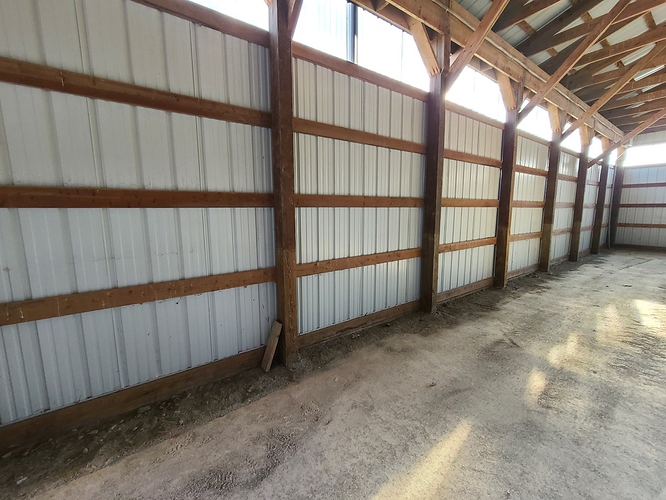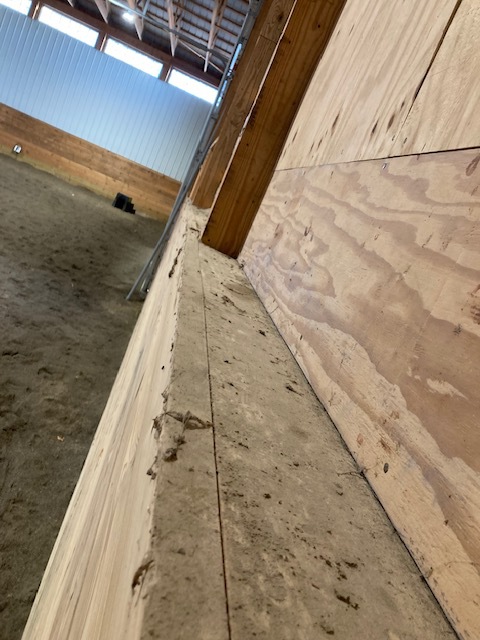I joined in hopes of receiving some opinions on what to do with our indoor riding arena. It is 72x150
I started to take off all the kick wall down (because of the non treated lumber rotting). It has been on for almost 32 years.
Is there a standard slant for kick walls? The owner before had only a slant of 7 inches (4 foot tall wall).
It had tongue and groove 1 inch boards on face of the wall. It seems very sturdy but is there any other opinions on what could be used?
Had any insulated their kickwall? I will not do spray insulation and am wondering about using Styrofoam?
Above the 4 foot kick wall - does anyone have opinions on what to do? I had been thinking about using barn siding?
Any ideas would be appreciated.
Doug
York, PA



